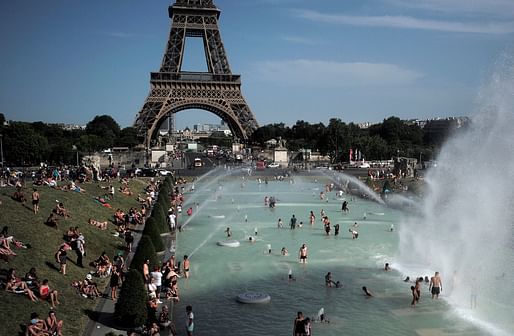

Cities across Europe are scrambling to implement public infrastructure upgrades to combat rising temperatures. As a result, many areas are "melting" under the strain of heatwaves that have already claimed more than 1,900 lives in Spain and Portugal alone. Not to mention the record high temperatures in England this week, where the area reached 40°C (104 F) for the first time.
According to new projections from the United Nations, the effects of heatwaves are expected to continue in frequency until at least the 2060s. As a result, nascent Heat Actions Plans in cities like Paris (where only 35% of Metro cars have air-conditioning) are planning for tests that will likely be further exacerbated by an expected influx of climate refugees from some of the most-affected regions during that same timeframe. As news continues to break, architects and urban designers try to face the worsening impacts of climate change's increasingly moribund demands.
For example, efforts to alleviate the heat island effect and adequately inform the public was seen in the French capital's adaptation of warning systems through a mobile app called Extrema Paris. Using GPS, the app can "point the user to publicly-accessible spaces, notifying them when they are at risk of too much heat exposure."

Previously on Archinect: How can cities become "heat-proof," and how does this affect the built environment?
Recently, DW reported a series of policies and solutions made in various areas that can be adopted to help mitigate rising temperatures. Cities like Madrid and Vienna are trying to take advantage of strides in green roof design and rapid asphalt cooling in addition to other more low-tech measures. The decrease in heat-related deaths in India was also used as an example of how cities increased access to public spaces and prevented further fatalities.
Ahmedabad-based architect Yatin Pandya discussed with DW how traditional architectural methods could be used to battle the heat danger. DW points out that "many western-style buildings in cities like Bangalore are constructed with steel and glass exteriors and require constant air-conditioning. But centuries before this was an option, Indian homes used awnings and bay windows to provide shade and courtyards and shuttered windows to create cooling airflows."
"It's not about turning the clock backwards, but vernacular architecture gives you a lot of insight into the local responses in the pre-electricity days," he told DW. "Those were very simple logical principles which today can easily be adapted."
No Comments
Block this user
Are you sure you want to block this user and hide all related comments throughout the site?
Archinect
This is your first comment on Archinect. Your comment will be visible once approved.